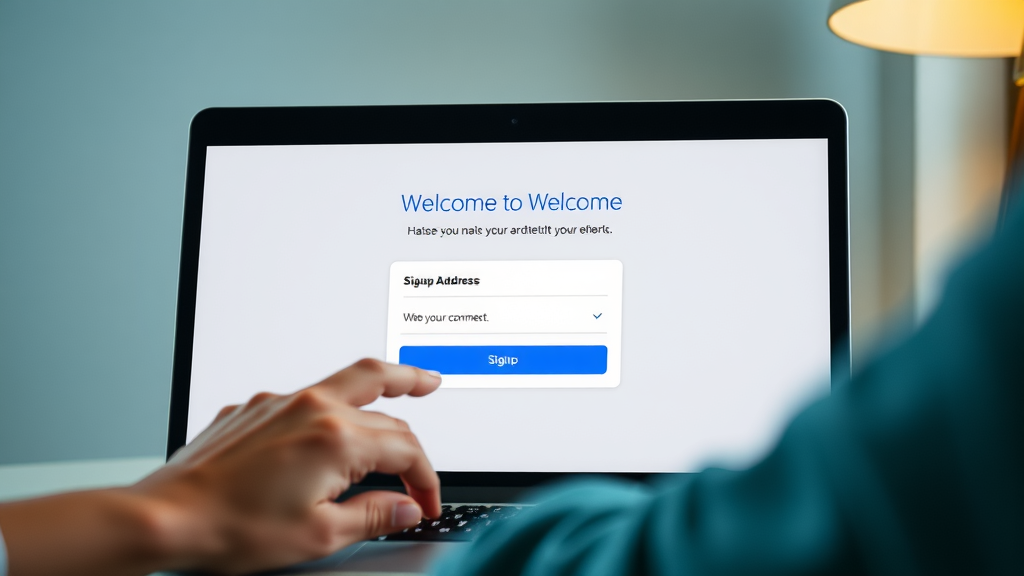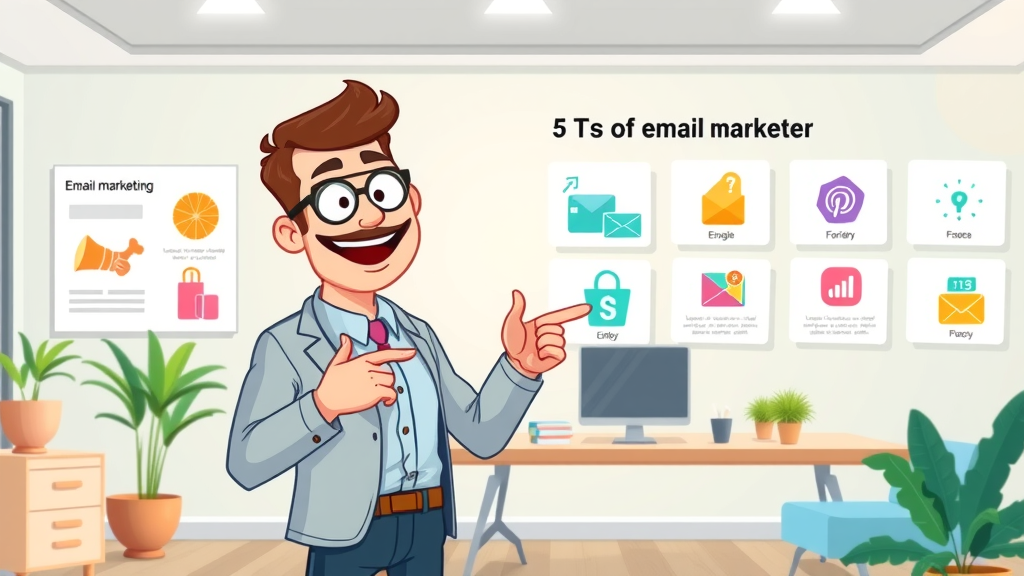Did you know: For every $1 you spend on email marketing, the average ROI is a staggering $42? If you’re searching for proven ways to boost your marketing campaigns, email marketing strategies remain the most effective channel to reach, engage, and convert new and existing customers. This comprehensive marketing guide will walk you step by step through what really works, whether you’re starting out or ready to level up your results—and why smart email marketing should be the backbone of your marketing strategy.
Why Effective Email Marketing Strategies Drive Transformative Growth
When executed thoughtfully, effective email marketing strategies create measurable momentum for any business. Email outperforms nearly every other digital channel, combining high ROI with the capability to reach customers directly in their inbox—a space they check daily. By leveraging consistent, relevant, and valuable marketing emails, companies nurture relationships, increase brand awareness, and ultimately drive sales.
Today’s businesses require an agile marketing strategy to stay ahead. With fierce competition and shifting consumer behaviors, connecting one-on-one with your audience using personalized email marketing campaigns is essential. From boosting your open rates to converting leads with tailored messages, investing in a robust email marketing strategy is key to unlocking your business’s true growth potential.
"Did you know that for every $1 you spend on email marketing, the average ROI is $42? Email marketing strategies are not just relevant—they're essential."

Essential Principles of a High-Impact Email Marketing Strategy
- Define clear objectives for every email campaign
- Segment your email list to drive personalization
- Design compelling subject lines for optimal open rates
- Leverage automation and scheduling for timely delivery
- Analyze data and iterate your marketing strategy
High-performance email marketing campaigns begin by aligning every message with a clearly defined goal—be it sales, lead nurturing, brand engagement, or driving website traffic. Next, list segmentation is non-negotiable: analyzing your audience’s demographics and behaviors (like purchase history, interests, or location) allows you to send email content that truly resonates and feels personalized. A well-segmented email list not only improves open rates but amplifies engagement and conversions.
Of course, your campaign’s success hinges on its execution. Crafting irresistible subject lines can mean the difference between being read or ignored. To maximize results, tap into email marketing tools or a reliable service provider that offers automation and detailed analytics. These platforms let you schedule marketing emails at optimal times, trigger drip campaigns for nurturing leads, and gather actionable insights to refine your strategy with each campaign.
Building and Growing an Effective Email List: Your Primary Marketing Tool
It's impossible to run successful email marketing campaigns without a robust email list. Think of your list as a powerful marketing tool that grows your business with every subscriber. The process starts with offering high-value lead magnets—like free downloads, exclusive tips, or special offers—on your website’s landing pages. By inviting visitors to share their email address in exchange, you lay the foundation for long-term engagement.
Using an integrated strategy, connect your signup forms to your CRM or preferred email service provider. This ensures you aren't just growing numbers, but capturing qualified leads ready to engage with your brand. Remember, quality always trumps quantity, so focus on list hygiene by routinely removing inactive subscribers and ensuring all email addresses are valid.
Best Practices for Email List Growth
- Utilize high-converting signup forms
- Offer valuable lead magnets
- Integrate with CRM and service providers
High-converting signup forms are the gateway to your email list. They should be simple, visually appealing, and positioned in strategic places across your website—such as landing pages, blog posts, and pop-ups. Compelling calls-to-action increase submission rates, while lead magnets entice visitors with immediate value.
Integrating your signup process with your CRM or marketing email provider keeps your data organized and makes segmenting new subscribers seamless. Automation tools then help you nurture and welcome leads with targeted follow-ups, ensuring new signups turn into engaged audience members eager to hear from you.

List Segmentation and Targeting
- Segment by behavior and demographics
- Personalize marketing emails for each audience
Effective email list segmentation means grouping subscribers based on demographic data (age, location, role), user behavior (browsing, past purchases, email engagement), or stated preferences. This allows you to craft marketing campaigns that are highly relevant, increasing your open rate and driving meaningful actions. Behavioral segmentation, for example, enables you to send follow-up emails to cart abandoners or upsell recommendations based on previous purchases.
Personalization extends beyond just using the subscriber’s name. Dynamic content, different messaging, and targeted offers ensure your marketing emails hit home for each segment. This degree of customization consistently outperforms blanket campaigns, making your email marketing strategy more effective and boosting your reputation as an email pro.
Crafting Attention-Grabbing Subject Lines to Maximize Engagement
| Subject Line Type | Example | Best Use Case |
|---|---|---|
| Curiosity | Can You Guess What’s Inside? | Product Launch |
| Urgency | Only 24 Hours Left! | Limited-Time Offers |
| Personalization | John, Your Custom Plan Awaits | Onboarding/Welcomes |
Subject lines are your first—and often only—chance to capture attention in a crowded inbox. A compelling subject line increases open rates and sets the tone for the entire email campaign. Strategies that work include provoking curiosity (“Can You Guess What’s Inside?”), creating urgency (“Only 24 Hours Left!”), and personalizing subject lines (“John, Your Custom Plan Awaits”).
The key to optimal engagement is continuous testing and analyzing what resonates best with your audience. Keep subject lines concise, below 50 characters, and front-load important information. Steer clear of spammy phrases, excessive punctuation, or all caps to maintain sender reputation and increase deliverability for your email campaigns.

Developing Winning Email Campaigns That Convert
Not all email campaigns are created equal—well-structured marketing email campaigns are the linchpin to achieving higher conversions. Begin by setting clear objectives and key performance indicators, such as open rates, click-throughs, or direct sales. Selecting the right marketing platform or service provider is crucial; advanced tools offer testing, automation, and analytics features that multiply your marketing strategy's impact.
Always test both your content and visuals before launching a large-scale email marketing campaign. This includes split-testing subject lines, images, and call-to-action button placement to ensure your emails are engaging, persuasive, and mobile-friendly. Monitor results in real time so you can make quick adjustments, maximizing your email campaigns' effectiveness.
Structuring Effective Email Marketing Campaigns
- Set campaign goals and KPIs
- Choose the right marketing platform or service provider
- Test email content and visuals for performance
Every effective email marketing campaign starts with specific goals—do you want to nurture leads, drive sales, introduce a new product, or re-engage dormant users? Once your objective is fixed, choose a marketing platform that integrates easily with your workflow and matches your scalability needs. Top-tier email marketing tools deliver features like subject line testing, campaign automation, and robust analytics.
Before you send email blasts to your entire list, test content variations. Split-test visuals, copy, timing, and even the sender’s name to determine what resonates most. The more you test and iterate, the more refined your marketing strategy becomes.
Email Marketing Campaign Automation: Tools and Tips
- Trigger-based messages
- Drip campaigns for nurturing leads
Email automation empowers marketers to deliver timely, relevant messages without manual intervention. Trigger-based messages—such as welcome emails, post-purchase follow-ups, or re-engagement nudges—improve engagement and guide subscribers down the customer journey seamlessly. Leading email marketing tools make it easy to build, automate, and optimize flows based on subscriber actions or time-based triggers.
Drip campaigns are sequential marketing emails that nurture leads over time, providing value and encouraging each next step—download a resource, attend a webinar, or make a purchase. By planning and refining these automated sequences, you increase the chances of conversion at every touchpoint in your email marketing campaign.

Optimizing Email Content: From Opening to Call to Action
Great design and clear messaging are non-negotiable in high-converting marketing emails. Mobile-responsive templates guarantee your email is readable on any device, while clean formatting and impactful visuals hold attention and drive home your message. Always include a strong, actionable call-to-action (CTA) so readers know exactly what to do next—shop, book a call, download, or engage further with your brand.
Use A/B testing to refine content, layout, and CTAs, tracking which elements produce the highest conversion rate. The right marketing tool will simplify testing and analytics, helping you optimize every aspect of your marketing emails for long-term growth.
Designing Emails that Convert
- Mobile-responsive templates
- Compelling visuals and clean formatting
- Actionable CTAs in every marketing email
Poorly formatted or cluttered emails result in low engagement and high unsubscribe rates. Instead, use templates designed for clarity and brand consistency—big headlines, enough white space, and bold clickable buttons for CTAs. Visuals should reinforce your message, not distract from it, and every email must direct the reader to a single, compelling action.
With most users scanning emails on mobile devices, it’s imperative your emails are mobile-friendly. Test your designs on various screens and devices before sending. If your marketing email is hard to read, your message—and your ROI—will go unnoticed.

Personalizing the Customer Experience
- Using dynamic content
- Segment-based custom messaging
Personalized marketing emails dramatically outperform generic blasts. Using dynamic content, you can swap images, offers, or copy blocks depending on the recipient’s past actions or demographics, delivering greater relevance and value at scale. Top email service providers make personalizing your campaigns simple with drag-and-drop content blocks and advanced targeting options.
Consider the customer journey—send different email messages to new subscribers, frequent shoppers, or dormant users, creating a tailored experience for every segment. This approach builds trust, increases loyalty, and directly boosts campaign conversion rates.
Analyzing and Refining Your Email Marketing Strategies
Ongoing analysis is the difference between a stagnant and a thriving marketing strategy. Regularly tracking essential metrics like open rates, click-through rates, conversion rate, and unsubscribe rate allows you to spot trends and areas for improvement in your email marketing campaigns. Use this data to iterate on your emails’ design, timing, and content for even better results with each campaign.
It’s also vital to identify list churn points—when people stop engaging or start unsubscribing. Cleaning your list and adjusting your campaigns in response to these signals keeps your sender reputation healthy, ensuring consistently high deliverability for all your marketing emails.
Essential Metrics for Email Campaign Success
- Open rates and click-through rates
- Conversion rate
- Bounce and unsubscribe trends
Open rate tells you how effective your subject lines and sender names are, while click-through rate shows how compelling your content is. Conversion rate—measured by actions like purchases or registrations—demonstrates the business impact of your email campaigns. Keep a close eye on bounce and unsubscribe trends, as these can indicate technical issues or content misalignment that need rapid response.
Leverage this data to segment your audience further, retarget disengaged users, and tailor future content. The best marketing platforms automate much of the data collection and visualization, making it easy to iterate on your strategies.
"A successful marketing campaign is only as good as the data driving continuous improvement."
A/B Testing: Elevating Your Email Marketing Strategy
- Test subject lines, timing, and content
- Utilize feedback for marketing strategy optimization
A/B testing is the engine for continual improvement in email marketing strategies. Regularly compare different versions of subject lines, content layout, and send times to uncover what resonates best with your audience. Even small changes—like a different CTA placement or word choice—can lift your open and click-through rates significantly.
Gather feedback directly through short surveys embedded in marketing emails and use open rate and conversion data to identify winning variations. This data-driven approach ensures your marketing strategy steadily improves, campaign after campaign, resulting in superior engagement and ROI.

Top-Performing Email Marketing Tools and Service Providers
| Tool Name | Best For | Key Features |
|---|---|---|
| Mailchimp | SMBs & Automation | Segmentation, A/B Testing, CRM Integration |
| ActiveCampaign | Advanced Automation | Workflow Automation, Advanced Reporting |
| ConvertKit | Creators & Bloggers | Broadcast Emails, Landing Pages |
Selecting the best email marketing tool or service provider is critical for executing winning campaigns. Solutions like Mailchimp provide robust automation and easy list management, ActiveCampaign stands out for advanced workflows and reporting, while ConvertKit is highly favored by creators and bloggers for its simplicity and effectiveness. Evaluate your business needs—automation, segmentation, analytics—and choose a platform that seamlessly integrates with your existing marketing stack.
When comparing marketing platforms, prioritize flexible template builders, A/B testing capability, segmentation tools, and strong customer support. These features enable you to create and refine highly effective email marketing campaigns quickly.
Choosing the Right Marketing Platform for Your Email Campaigns
Every business is unique, so consider your audience size, technical know-how, and marketing goals before selecting your core email marketing platform. Test trial versions to ensure ease of use, and review integrations with your CRM, e-commerce platform, or social media tools. The right service provider removes bottlenecks and empowers your team to execute campaigns efficiently.
Read independent reviews and case studies to get a true sense of each platform’s strengths and weaknesses. Reliable platforms offer strong analytics, deliverability, and the support you need to troubleshoot any issues, making them a true partner in your marketing strategy.

How to Align Email Marketing Strategies with Broader Marketing Campaigns
- Integrating with social media and content marketing
- Syncing messaging across all digital marketing strategies
- Cross-channel marketing campaign tactics
For maximum impact, connect your email marketing strategies with your brand’s other digital channels. Synchronize messaging and promotions between email, social media, blog content, and paid ads to deliver a unified customer experience. Cross-channel coordination amplifies reach, reinforces your brand message, and boosts overall marketing campaign effectiveness.
Use email campaigns to drive traffic to new blog posts or product launches on your website, promote social contests, or retarget audiences who’ve interacted with your other marketing channels. Data collected from email engagement can inform your messaging and creative for the entire marketing strategy, creating a virtuous cycle of improvement across every campaign.

Case Studies: Email Marketing Strategies in Action
"Real-world marketing campaigns reveal that tailored email marketing strategies drive up to 58% more revenue per customer."
- E-commerce welcome series success story: An online retailer launched a segmented welcome series tailored to new shoppers’ interests, boosting first-purchase conversion rates by 39% and improving list retention.
- B2B lead generation nurture campaign: A SaaS company implemented multi-touch drip campaigns for cold leads, resulting in a 22% rise in qualified demo bookings over three months.
- Non-profit fundraising email campaign: A small charity used storytelling emails and personalized appeals, raising 31% more in donations versus one-size-fits-all asks.
These examples prove that strategic marketing emails directly impact business goals. Segmentation, personalization, and automation are the building blocks of campaigns that deliver outsized results, regardless of industry or audience size.

Overcoming Common Email Marketing Challenges
Even the best email marketing strategies must overcome hurdles like deliverability, spam filters, and subscriber fatigue. Maintaining high deliverability starts with authenticating your sending domain using SPF, DKIM, and DMARC records—this builds trust with email service providers and helps keep your campaigns out of the spam folder. Regularly prune inactive or invalid addresses from your email list to maintain a healthy sender reputation.
Content quality is equally crucial. Overloading subscribers with too many marketing emails or bland, generic messages leads to higher unsubscribe rates. Instead, focus on providing genuine value, maintaining list relevance, and sending each marketing campaign only to those who benefit most.
Boosting Deliverability and Avoiding Spam Filters
- Authenticate your email with SPF, DKIM, and DMARC
- Regularly clean and update your email list
- Avoiding spam trigger words in marketing emails
Technical setup is the foundation for strong deliverability. Make sure SPF, DKIM, and DMARC are properly configured to legitimize your messages with inbox providers. Frequently clean your email list to avoid bounces, and steer clear of scammy phrases, suspicious links, or misleading subject lines which can land you in spam. Monitor your analytics for high bounce or unsubscribe rates and address issues promptly to protect your email marketing strategy's effectiveness.
Use double opt-in forms to ensure all subscribers genuinely want your content, and avoid sending emails too frequently. Remember, maintaining your sender reputation is critical to the success and sustainability of every email marketing campaign.
Compelling Content Over Quantity: Quality-First Marketing Strategy
Sending more emails does not mean generating more engagement or sales. In fact, the opposite is often true. Each message should aim to provide meaningful value: teach, inspire, entertain, or help. A concise, visually engaging marketing email with a single clear CTA is far more likely to be opened and acted upon than lengthy, unfocused newsletters.
Always lead your marketing strategy with quality. Review engagement regularly; if you see a drop in open or click rates, pause to reassess your content. Survey your audience—finding what matters to them can shape future campaigns and sustain high performance.

- Video walkthrough of building and launching a successful email marketing campaign
- Explainer on designing effective subject lines for high-performance marketing emails
Incorporating video into your marketing strategy is a powerful way to show rather than tell. Share video tutorials on email platform setup, campaign planning, and writing subject lines that work. These assets help onboard new team members, teach best practices, and reinforce why strategic email marketing is indispensable for growth.
Short video explainers can also be embedded directly into marketing emails, increasing engagement and educating subscribers about your products, services, and unique selling points in a memorable way.
People Also Ask: Strategies and Best Practices in Email Marketing
What are the strategies of email marketing?
- Segmentation and targeting audiences
- Personalize marketing email content
- Automated lifecycle campaigns
- Split-testing subject lines, content and send times
Leading email marketing strategies focus on delivering relevant, personalized messages to well-targeted audiences. Segment your email list by interests, behaviors, or demographics to tailor your offer. Use automation to trigger campaigns automatically throughout the customer journey, and continually A/B test key email elements—especially subject lines, content blocks, and timing—for the highest engagement.
The most effective email marketing campaigns avoid a one-size-fits-all approach. Instead, they leverage personalization, automation, and feedback loops to build stronger customer relationships and drive measurable business results.
What are the 5 T's of email marketing?
- Tease (create anticipation with subject lines)
- Target (segment your audience)
- Teach (offer value and insights)
- Test (A/B all key campaign elements)
- Track (analyze and improve performance)
The "5 T's" are foundational to building successful email campaigns. Start by “Teasing” with enticing subject lines, then “Target” the right segments. “Teach” by providing value, “Test” to optimize content, and “Track” every result to iterate and improve your marketing strategy. Consistently applying these five principles will keep your emails performing strongly.

What is the 80/20 rule in email marketing?
- 80% value-driven content (education/entertainment)
- 20% promotional offers and CTAs
Apply the 80/20 rule by ensuring that 80% of your marketing email content is dedicated to providing value—think education, stories, or humor—while only 20% pushes promotions or direct offers. This keeps audiences engaged and reduces the risk of high unsubscribe rates, making your list a consistently effective marketing tool.
What are the 4 P's of email marketing?
- Permission (opt-in compliance)
- Personalization (customized messaging)
- Performance (measure open/click rates)
- Post-click (optimizing what happens after the email is opened)
The 4 P’s ensure a holistic approach: always gain permission with clear opt-in, personalize your messaging, monitor performance with analytics, and optimize the landing pages or offers your audience sees after clicking an email. Easier compliance and user-centric design result in lasting subscriber relationships.
Frequently Asked Questions: Email Marketing Strategies
- How often should I send marketing emails to my list? For most businesses, 1-4 emails per month is a good starting point. Monitor your engagement metrics—open rates, clicks, and unsubscribes—to tailor your frequency. More isn’t always better; focus on providing real value every time you hit send.
- What is the average open rate for email marketing campaigns? Across industries, open rates usually range from 18% to 25%. Factors like subject line quality, list segmentation, and timing heavily influence your results.
- How can subject lines improve my email marketing strategy? Dynamic and personalized subject lines stand out, boost open rates, and set the right expectations for email content. Test different approaches—questions, urgency, or personal touches—to see what your audience prefers.
- What are the top metrics to track for a successful marketing campaign? Focus on open rate, click-through rate, conversion rate, and unsubscribe rate. These indicators reveal both engagement and business impact, helping you refine every campaign.
- Which marketing tool or service provider is best for small businesses? Tools like Mailchimp and ConvertKit are great for small businesses due to ease of use and robust features. Choose one that aligns with your growth stage and integrates swiftly with your other marketing channels.
Recap: Maximizing Growth with Smart Email Marketing Strategies
- Focus on audience segmentation, personalizing messages, and employing the right marketing tools
- Continuously test, analyze, and refine every email marketing campaign for better results
- Align your email marketing strategies with your brand’s broader marketing strategy for more cohesion and impact
Ready to Achieve Exceptional Results with Email Marketing Strategies?
"Ready to grow your business and connect with more customers? Book your free marketing strategy with our team today. Call: 314-560-4642 or visit: https://marketingconnectionsllc.com/get-in-touch "
To further enhance your email marketing strategies, consider exploring the following resources:
- “12 Fundamental Email Marketing Tips Every Marketer Should Know” ( blog.hubspot.com )
This article provides essential tips, including the importance of personalization and integrating social media to amplify your email campaigns.
- “5 Email Marketing Strategies That Deliver Results” ( zoho.com )
This resource emphasizes audience segmentation and send-time optimization to enhance engagement and open rates.
By delving into these articles, you’ll gain actionable insights to refine your email marketing approach and achieve better results.
 Add Row
Add Row  Add
Add 






Write A Comment